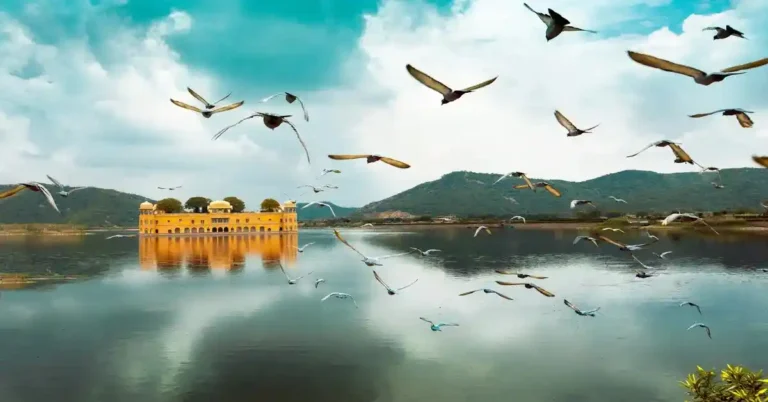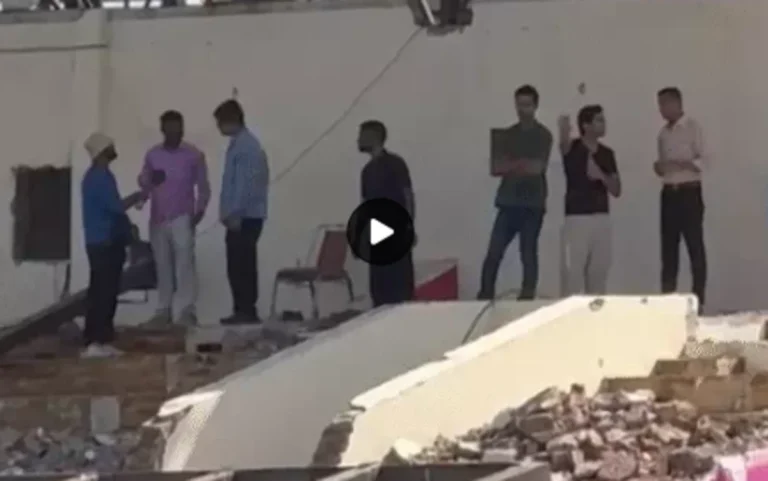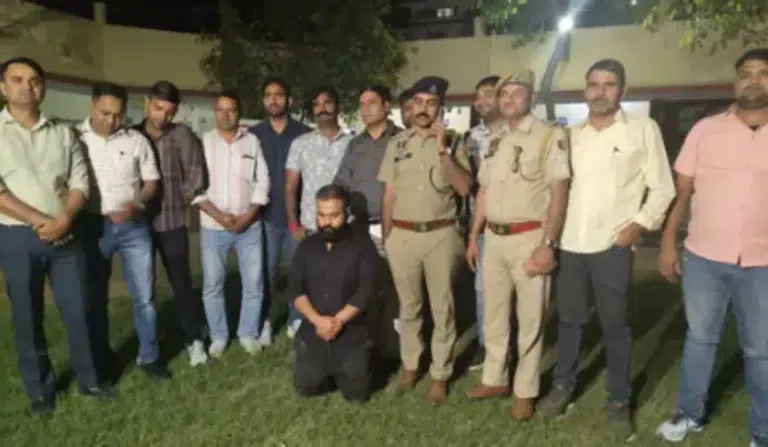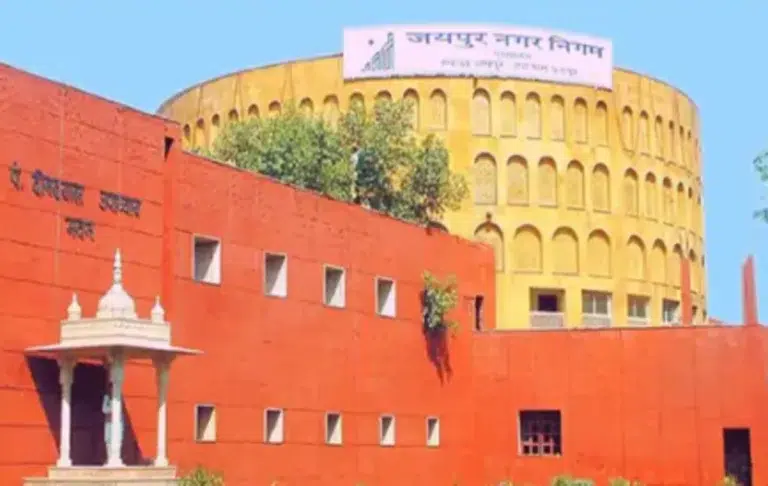Jaipur Water Crisis 2025: The once-‘Pink City’ now undergoes its existential threat – with a crisis of most severe water deficit. In the coming months of 2025, the city would find itself faced with perhaps one of its greatest challenges yet – impending drought. The current narrative touches on the scenario that exists relative to water scarcity in Jaipur – what is happening, what leads to this crisis, the socio-economic effects, and possible ways out.
The Drying Wells: Groundwater Depletion
Maintenance of the structural and historical richness of Jaipur faces dire environmental threats emerging from rapidly declining groundwater reserves. Groundwater reliance in the city has helped it sustain through time, but it has led to the inevitable crisis projected for the year 2025, where the extraction-replenishment balance has gone awry. Jaipur is running out of water, and alarmingly overusing the water it has. In 2023, it extracted 2.22 liters for every liter that was recharged naturally. This will plunge the water table, many areas witnessing declines of more than 25 meters just in a few years. To add to it, 2021-2023 are the years of a deficient rainfall that do not replenish aquifers properly.
With all the 16 administrative blocks of the city being classified as overexploited, the purest evidence in this regard really is the fact that the “natural recharge” does not have anything even close to that rate on an annual basis. All this has now led Jaipur into a scenario where traditional wells are undergoing moisture depletion, and borewells are increasingly having to go deeper, resulting in a further increase in costs and energy consumption. Effects of this depletion include socio-economic impacts as societies struggle to get their daily water supply and have to depend on costly private water tankers.
An urgent call for action in terms of water conservation intervention, changing the way urban planners draw water management in cities, and possibly reverting or updating traditional water harvesting techniques would include stepwells and johads. If this does not happen, more and more wells in Jaipur will be left dry, and worse, the entire city would be on its way to a bad crisis regarding water scarcity, thereby redefining its habitability.
The Price of Water: Economic Impact
The crisis in water supply in Jaipur by 2025 has been both an account of scarcity and economic deprivation. Falling groundwater levels coupled with the drying up of traditional sources have made manifest the economic ramifications of water scarcity. The price of water has generally risen from something trivial to now become quite fantastic, bereft of the private water tankers being anything more than a luxury item to many.
While in some locations in Jaipur one can find the cost of a tanker of water quadrupled from what was previously charged, some residents pay as much as Rs 2000 for the same amount they once spent Rs 500. Water has then become an expensive commodity rather than a basic necessity; hence the major impact has to bear the intense burden of the lower-income households. Households must now start making tough choices as to whether they should get water, groceries, or other essential items.
The ripple effect produced from this water price crisis does not just end with the households. Local industrialists mostly include agriculture and manufacturing industries, which are dependent on water. All these face more operational costs. It results in reduced productivity, increased product prices, and in some cases closure of firms, causing stagnation in the economy. The economic toll can also be seen in the public sector where the Public Health and Engineering Department (PHED) is leaving in a lurch over supply maintenance that is leading to public dissatisfaction. Poverty-stricken municipal budgets continually worsened by the increased cost of water management, which includes maintenance of aging infrastructure and necessity for new sourcing methods, grow tighter.
Besides, the crisis led to a black market in water because these criminals exploited the desperate residents and made the economy of Jaipur murkier. Rising water prices accentuate the necessity of urgent investments in sustainable water management strategies that can ease economic tensions while still ensuring equity in access to the very vital resource.
Government Responses and Policy Failures
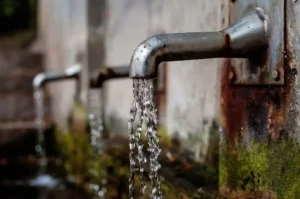
Government Responses:
- Mukhyamantri Jal Swavlamban Abhiyan (MJSA): This program, introduced predominantly to bring the rains back into the villages and make them self-sufficient concerning water, was possibly one of the earliest fire-fighting steps taken by the Rajasthan government. The entire program revolves around the construction of water conservation structures, such as check dams, percolation tanks, and ponds, to raise the groundwater level. Its actual appraised scale includes the ambitious financial investment for covering thousands of villages.
- Atal Bhujal Yojana: A centrally initiated community-based groundwater management programme, Atal Bhujal Yojana provides cash incentives for the water conservation and gives importance to local governance in the water management sector towards generating sustainable groundwater resource management.
- Rainwater Harvesting: Some judicious recommendations and subsidies provided to establish rainwater harvesters for the urban localities like Jaipur are all part of a nationwide intent to recharge groundwater, which is yet in the rather early stage and has not fully established or proven itself.
- Eastern Rajasthan Canal Project (ERCP): Yet another vision aimed mostly at improving the condition of water supply in thirteen districts of Rajasthan, including Jaipur, the ERCP was exposed as an ongoing debate for almost years. To get water from the Chambal River basin is directed towards dry areas, but the project was already delayed by inter-state water sharing disputes and bureaucratic bottlenecks.
- Community and NGO Engagement: The government has also partnered with an NGO or community group at the times for executing the water conservation project at the grassroots level. These include the exemplary works initiated by the Jal Bhagirathi Foundation in Rajasthan, unfolding efforts of rejuvenation of traditional water bodies.
Policy Failures:
- Implementation Delays: According to the ERCP project, this scenario is a classic example of the government’s tardiness. Everything was promised, but not a lot has happened in terms of the project’s implementation, and areas that are severely water-starved have remained bereft of any useful relief.
- Inadequate Infrastructure: Fast-track urbanization, especially in the case of Jaipur, has not been complemented by adequate infrastructure for water supply. The unauthorized colonies’ regularization proceeded without ensuring water supply systems, further accentuating the demand-supply gap.
- Over-Reliance on Groundwater: In moving towards a more adequate policy, less attention has been paid to diverting away from groundwater, which holds a vital zone in meeting the water needs of the state. This in turn has led to the over-extraction of groundwater, with potential alarming consequences in urban areas, notably, where the rate of decline in the water table is extremely high.
- Poor Coordination: Lack of coordination seems to be the order of the day, with several departments of the government concerned with water management not acting in harmony with one another. Such fragmentation leads to overlapping roles, inefficiencies, and, at times, conflicting policies.
- Weak Enforcement: Even though water conservation policies exist, weak implementation at the local level has greatly obstructed their efficacy. For example, groundwater extraction laws or the requirement for new buildings to have rainwater harvesting systems are often poorly enforced.
- Reactive Approach: Most of the governmental action after water problems have arisen was reactive-response based on short-term expediency-watertankers etc.-to remedy immediate crises rather than a proactive approach to prevent occurrences, thus establishing a vicious circle of temporary relief from immediate distress without ever addressing the underlying concerns.
- Inadequate Public Education: Competing programs to create awareness exist, but these have neither been extensive nor impactful enough to promote a culture of water conservation throughout the state, especially in high-consumption zones like urban areas.
Just as Rajasthan, especially Jaipur, is a case where policy-drama-integration can best be applied, so too much evidence is provided of the intent of those who administer schemes, which lack adequate implementation, coordination, and an approach toward sustainable, longer-term water management. For public welfare concerning water management, the Rajasthan Government’s website, water.rajasthan.gov.in, socializes and broadcasts the ongoing efforts of water management in Rajasthan. It also ties the state under the clan of the Hon’ble Chief Minister toward water conservation and supply.
Community Efforts and the Road to Sustainability
The community has almost rallied against the water problems that were being faced in Jaipur as there is no quick action by the government. The local NGOs together with residents have initiated grass-roots projects to revive the old water harvesting methods traditionally used, such as johads and tankas. Schools and community organizations have assumed the role of raising awareness and instilling sustainable practices for using water in future generations.
There is also an augmenting trend towards greywater recycling and rainwater harvesting systems, which will, if scaled up, yield much reduction of the city’s freshwater demand. Yet, these grassroots endeavors must be complemented by those of larger societal and corporate bodies to attain the necessary scale of impact towards a meaningful change in the city’s water scenario.
Conclusion: Jaipur Water Crisis 2025
Jaipur will have to try a completely different approach to enter into the drought in 2025. The government needs to complete and expand a water supply project like that of ERCP, expand investment on water conservation technologies, and thus ensure that urban planning is inclusive of sustainable water management. Community participation is essential: empowering local bodies to manage water resources within their confines, promoting for local innovations, and building conservation culture could fill the gap between present-day initiatives and their future growth sustainability. Most importantly, however, is the cultural shift towards acceptance that water is life and must never be confused with unending supply.
Jaipur’s water crisis in 2025 will not just be the politics of survival through scarcity but reimagining a city whose identity and world come from the heritage of water security toward its future. It is likely a tall order, but with a focused, multi-faceted approach, Jaipur could leap from the brink of drought to standing as a model of what urban water resilience can be.
A

